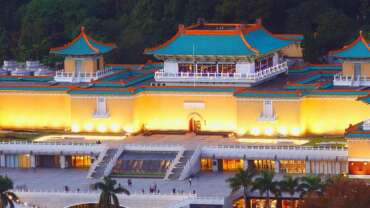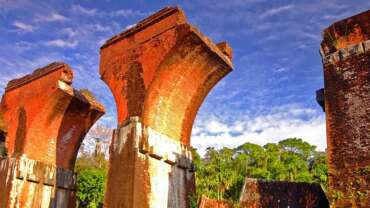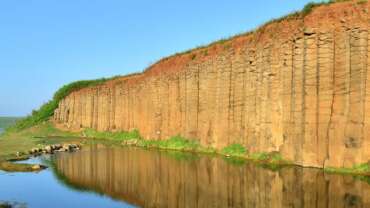Eastern Taiwan
Eastern Taiwan includes two counties, Hualien and Taitung. It faces the vast Pacific Ocean on the East and leans against the Central Mountain Ridge on the West. Standing in between such magnificent waters and mountains, when the Portuguese sailed by during their early explorations, they exclaimed “formosa,” meaning “how beautiful” in their language. That’s how Taiwan acquired its other name “Formosa,” and this reveals how beautiful eastern Taiwan is. Eastern Taiwan is blessed with lots of natural resources, an old farming culture, and kind-hearted locals. Known as the “back yard” of Taiwan, it is ideal for a slow trip. Take a walk on this paradise on Earth, take some deep breaths, and breathe in sweet air. Long stay is recommended here.
Taroko National Park is not to be missed. Its awe-inspiring steep gorges and strange geological formations are worth appreciation. Xiuguluan River’s crooked watercourse cuts through coastal mountain ridges, bringing about twists and turns along the way. The river is perfect for canoeing. Youngsters love coming here to enjoy exciting, challenging moments.
Hualien County
Hualien is the meeting point of the Central Cross-Island Highway, Suao-Hualien Highway, and highways leading south to Taitung. Hualien County is home to several world-class scenic attractions. In 1590, Portuguese sailors passed by the eastern coast of Taiwan and were so moved by the grandeur of what they saw that they named this land “Formosa,” the beautiful island. Since that time, the majestic views of Hualien have come to represent Taiwan.
Formerly known as Qilai, Hualien’s current name derives from the phrase “huilan” (eddying water), a reference to the swirling currents of the Hualien River where it meets the sea.
Hualien is Taiwan’s biggest county, with an area of about 4,628 square kilometers and a population of 350,000. The county borders the Pacific Ocean to the east and is hemmed in by the Central Range to the west. With its towering peaks, azure skies, vast seas, scenic valleys, cultural diversity, and friendly kindhearted people, Hualien has become one of Taiwan’s first-choice travel destinations for local and international visitors alike.
With all of its natural beauty, most of Hualien is a national scenic area. Visitors to the county can enjoy the impressive gorges at Taroko National Park, the magnificence of Yushan National Park, the stunning natural landscapes of the East Coast National Scenic Area, and the rustic charms of the East Rift Valley National Scenic Area. Wherever you go in Hualien, nature is there to greet you.
Taitung County
Taitung County is located on the delta of the Beinan River, at the southern tip of the rift valley. From coastal areas to mountain highs, Taitung greets visitors to a land of ecological richness and scenic beauty. The county is also known for its distinctive local products, from premium rice, day lilies, hibiscus, and sugar apples to sailfish, bonito (skipjack tuna), and other specialty seafood items.
Ethnic diversity has endowed Taitung with a unique culture, diverse festival occasions, and a vibrant tradition of oral history and myth to provide plenty of food for the mind.
Cyclists are also well served in Taitung. Taiwan’s oldest bikeway—the Guanshan Bicycle Trail—is located here, and other cycling routes can be enjoyed in Longtian Village (Luye Township), Chishang, Taitung City, and coastal areas, all while cyclists are surrounded by fairytale-like scenic beauty.
These natural charms have earned Taitung the nickname as the “garden of Taiwan.” True to this reputation, Taitung is a bona fide paradise for a healthy and relaxing holiday escape in nature’s embrace.








